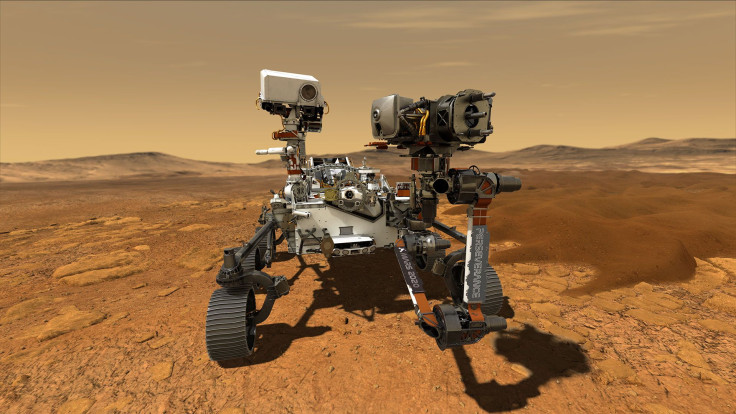NASA Mars Rover Nears Touchdown, Will Search For Ancient Life On Red Planet
KEY POINTS
- NASA's Mars 2020 Perseverance rover will land at the red planet's Jezero Crater on Feb. 18
- The rover will search for possible signs of ancient life on the Martian terrain
- Perseverance will bring back samples from Mars to Earth for further study
NASA's Mars 2020 Perseverance rover is steadily making its way to the red planet and will soon begin its search for evidence of ancient life. The Mars car has only about 50 million miles left to go before it reaches Earth's neighbor on Feb. 18.
The Perseverance rover, once it finishes its 293-million-mile journey and lands on the planet's Jezero Crater, will explore the Martian terrain that once held flowing rivers and lakes.
"We want Perseverance to help us answer the next logical question: Are there actually signs of past microbial life on Mars?" said Katie Stack Morgan, deputy project scientist at the Jet Propulsion Laboratory, in a statement on NASA's website. "This demanding goal means sending the most sophisticated robotic scientist yet to Mars."
Perseverance's search for potential signs of life will no doubt be a challenging one, thus the space agency made sure to equip the rover with cutting-edge science instruments.
These include the SHERLOC (short for Scanning Habitable Environments with Raman & Luminescence for Organics & Chemicals) and PIXL (short for Planetary Instrument for X-ray Lithochemistry). While both will play a role in the rover's search for past microbial life, SHERLOC's specialty is the detection of organic matter and minerals and PIXL will map the chemical composition of rocks and sediments.
These instruments will allow scientists back on Earth to analyze data at a higher level of accuracy than any other Mars rover has achieved before, NASA said.
As for why Jezero Crater was chosen as the rover's landing spot, the Perseverance science team hopes to find organic molecules and other potential signs of microbial life in the area, especially in the ancient river delta where water is believed to have flowed over 3.5 billion years ago.
As part of the team's goal to verify the existence of ancient life, Perseverance comes with a sample caching system that would help it in bringing back samples to Earth for further study. It is the first NASA rover to be equipped with the system.
Perseverance's method of gathering samples will be different from that of NASA's Curiosity as well. Unlike the latter, which uses its drill to pulverize rock, Perseverance's drill will cut intact rock cores that are about the size of a piece of chalk and place them in sample tubes until the rover reaches an appropriate drop-off location on Mars, NASA said.
Aside from the NASA rover, two other Mars missions are also scheduled to arrive on the red planet this February. These are China's Tianwen-1 mission and Hope, a weather-studying orbiter operated by the United Arab Emirates Space Agency, Space.com reported.

© Copyright IBTimes 2024. All rights reserved.





















